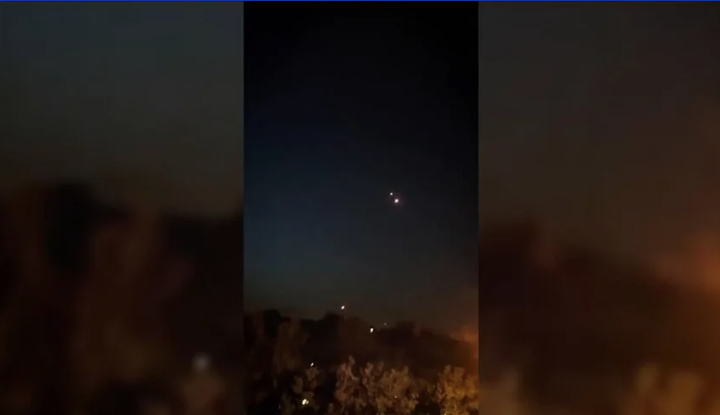Deep in the depths of the ancient Jewish lands, there is an intriguing and mysterious tale told by the people. It revolves around the Ten Lost Tribes of Israel and their barrier, the elusive River Sambatyon. This legendary riverbed has captivated our imaginations for centuries, raising questions about its existence and the fate of the tribes it is said to protect. In this investigation, we explore the enigmatic nature of the Sambatyon River and the enduring mystery of the Ten Lost Tribes.
The Legend of the Sambaton River
It is believed that the legend of the Sambation River dates back 2,000 years, possibly even older. The legend began to be told in the first century after Miletus, and has undergone many changes since then. In various cultures and Jewish writings, this legendary river is referred to as a derivative of fairy tales formed independently of each other.
According to ancient Jewish texts, the River Sambation is not an ordinary waterway. It is said that this river whistles with an enormous force, which gives the river the impression that it is impossible to cross. Legends tell that the wild streams of the river make a deafening sound, and that these streams drag heavy rocks, making it impossible to pass through the flowing waters with an enormous force.
The name of the river, Sambation, comes from the Hebrew word Sabbath. A special phenomenon in the word “sabbath” is a reference to the Sabbath, the only day when the river’s melting water was cut off, but the Jews could not cross it.

In Search of the Lost Tribes of Israel
The Ten Lost Tribes of Israel, exiled by the Assyrians in the 8th century BCE, have been the subject of countless speculation and research as to their whereabouts. According to ancient stories, these tribes were isolated from the rest of the world near the Sambatyon River. But which tribes were they? Did they really disappear? Were they wiped out or assimilated? Or do their descendants still exist, hiding from the modern world?
One story goes that the river blocked the way of the Levites or the Sons of Moses, while Judah and Benjamin were scattered among other nations. In this version of the story, God shows the Levites the way to the river to protect them, and seals the way behind them so that no one can find them. Meanwhile, a blazing fire also protects the Levi tribe from foreigners when the river is calm.
The story told by Eldad Hadeni is a little different. In this story, a mysterious cloud hides the Levites on the Sabbath. A similar story also exists in Islamic sources, which may be a parallel to Jewish sources that have not survived to the present day. The problem with these stories is that it is difficult to accept that the Levites separated from the Israelites and Jews.
The Bible states that the Levites mixed with the Jews and were exiled to Babylon together, so they may not have been exiled with the Ten Lost Tribes of Israel. Although the Levites lived in all the major cities in the Israel region, King Jeroboam I could not appoint the Levites as priests. As a result, the Levites also joined the Jews.
By the 6th century BC, all Jewish sources agreed that the River Sambation preserved the Ten Lost Tribes. Islamic sources at the time continue to describe a large group of descendants of Moses who obtained divine protection by not entering into the sin of the Golden Lamb (i.e. by worshiping a false god). While other versions do not focus on this sin, later sources describe the group as indeed virtuous, allowing it to fall among the Ten Lost Tribes.
Tracking the Substantial Location of the Sambation River
The Ten Lost Tribes and the River Sambation continue to hide under many problems. One of the key points is the location of the river. Academics and explorers have sought to find the exact location of the river. The advanced positions extend from the first thought (Mesopotamia) to China.
According to other searches, the Sambation River was found in an ancient kingdom in eastern Anatolia and southern Caucasus, Armenia, Central Asia (especially Kazakhstan or Turkmenistan) and the Maverick River (a historic region surrounding parts of modern Uzbekistan, Tajikistan, and Turkmenstan).
Another equally interesting question is how this river disappeared from the geographical books. Anyway, so far, no evidence has been obtained on this river. The fact is that the absence of geographical signs has allowed the legend to continue, and a river phenomenon that only calmed down on the Sabbath day has continued to be described.
In the 17th century, Rav Menashe ben Israel (1604-1657) from Amsterdam translates a story he heard from his father in his book Sefer Mikveh Yisrael. This story details a special “solution” used by the Conversion Jews [2] to determine the coming of the Sabbath day.
According to this story, a non-Jewish black man walks through the streets of Lisbon on a Friday afternoon, carrying a glass bag with moving sand and stones in his hand. Water and stone samples were taken from the Sambation River. When the Jews witnessed the sabbath bell, they noticed that the Sabbath was approaching and closed their shops.
Just like the river, the story of the Ten Lost Israel Cabal is nothing more than speculation. Do these ten tribes retain their own identities and traditions somewhere near the Sambation River, isolated? Or have they been integrated into the surrounding communities and have left no trace of their roots? The answers to these questions wait to be discovered and lie in the depths of history.
Ten Missing Israeli Knights Pursuing Search
Recent scientific developments, especially in genetics and DNA analysis, have given us hope to unravel the mystery of the Ten Lost Tribes. Genetic research offers the potential to trace horse breeds and identify links between specific regions and populations. But these efforts face significant difficulties arising from the interplay of migrations in history, the intermingling of genes, and the flow of time. Although it is fascinating to use science to solve this riddle, the journey to uncover the truth is still going on.
So, would you like to know if you have any connection with the Israelites and the Ten Lost Tribes? We developed a DNA test for each tribe with ancient DNA roots. Each test is compared to the DNA of ancient individuals from the tribes of Israel. Ancient DNA was obtained from skulls found in Israel before the exile, and the genome of ancient Israelis was rearranged with the help of artificial intelligence. This gave us the ability to calculate to what extent they genetically resemble modern individuals. With this test, we can trace where the Ten Tribes are.
Footnote:
- According to the Jews, God created the world from the market to the Sabbath in six days, and on the seventh day he sanctified and rested. Thus it is forbidden for the Jews to do any work, including traveling, from the sunset of Friday to the setting of Saturday, which they call the Sabbath. On that day he shall rest and worship. This is why the river of Sambathion stops at the Sabbath, the only time that the Jews can’t pass.
- In the late Middle Ages, Jews were called Christians under Spanish and Portuguese rule.





